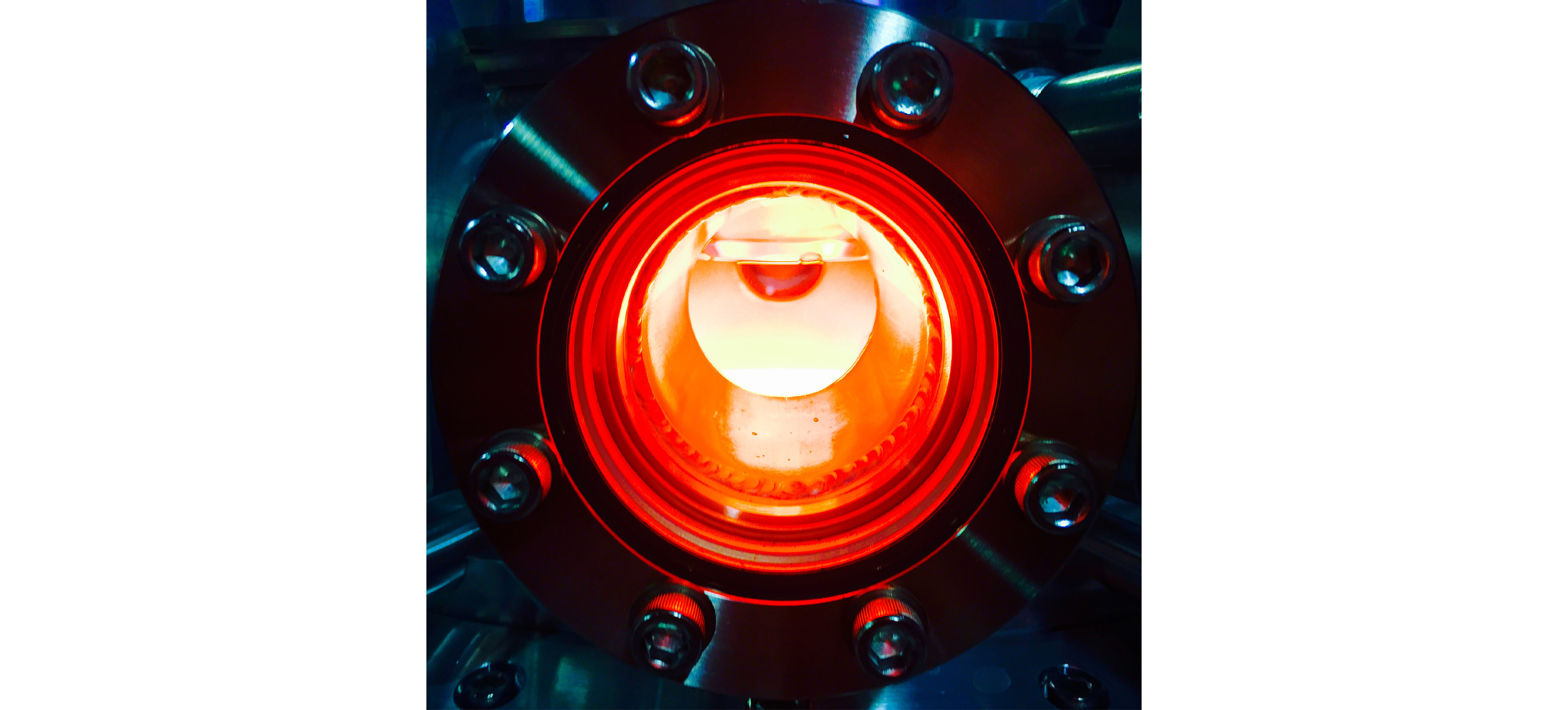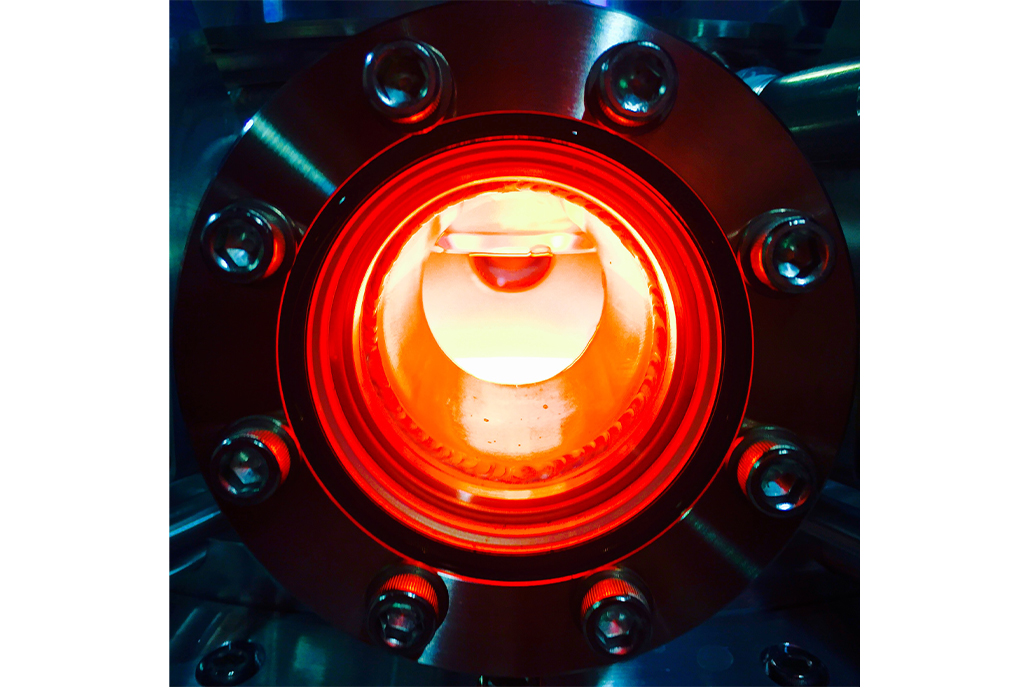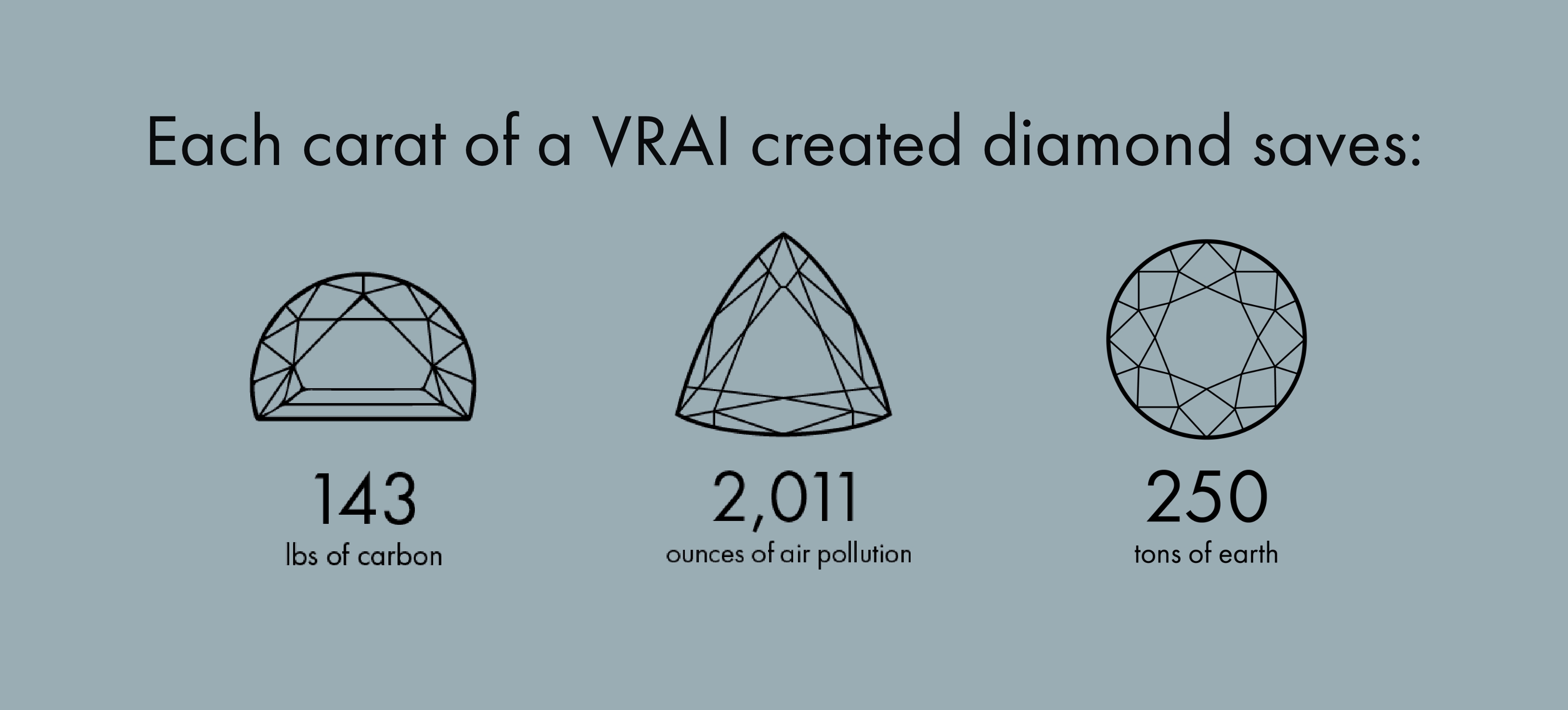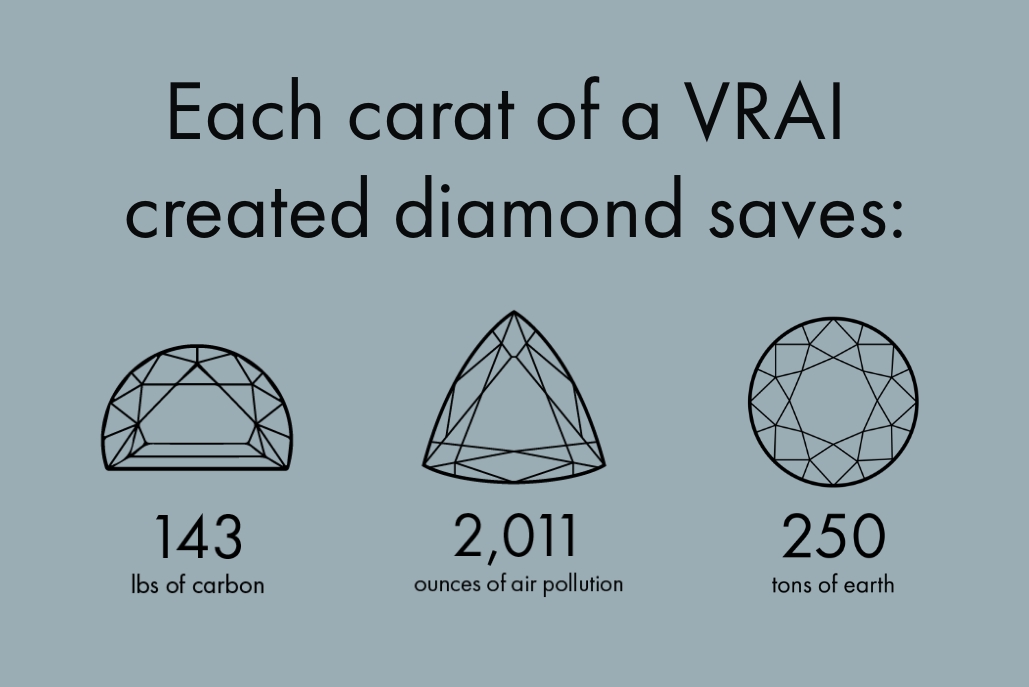

What Are CVD Diamonds: What You Need to Know Before Buying
Alicia Briggs & Kimberly Zerkel | August 22, 2023
As lab-grown diamonds have grown in popularity — due to their beauty, brilliance, and guaranteed origin — the term “CVD diamonds” has entered the conversation. CVD refers to a method for creating lab-grown diamonds. But this technical term and the diamond-making process it describes is often unfamiliar to shoppers ready to buy a diamond.
Thankfully, you don’t have to be a scientist to understand CVD diamonds. Read on to discover how CVD diamonds are made and why VRAI created CVD diamonds are right for you.
What Are CVD Diamonds?
CVD Diamonds are lab-grown diamonds made through a process called Chemical Vapor Deposition. This is one of two primary methods for creating lab-grown diamonds. CVD diamonds are produced in a laboratory setting without the negative environmental or human toll of mining.
How Are CVD Diamonds Made?
CVD diamonds are made by placing a small diamond slice in a vacuum chamber. This chamber converts carbon-heavy gasses into plasma. Through kinetics, the carbon atoms inside the chamber build on top of the diamond seed in a single vertical direction. The rough diamond then grows into a cleaner square shape.
It takes one month for a rough CVD diamond to be fully formed. Once formed, a small slice of this diamond is cut off and placed back into the chamber to sustainably repeat the process.
Are CVD Diamonds Real?
CVD diamonds and all lab-grown diamonds are real. They are physically identical to mined diamonds. The only difference between the two is the point of origin.
Like mined diamonds, CVD diamonds come in various colors and clarities and are graded based on the diamond 4Cs.
CVD vs. “Natural” Diamonds
The naked eye cannot tell the difference between a CVD diamond and mined diamond. Most trained gemologists cannot tell the difference between a polished mined diamond and a polished CVD lab-grown diamond without using advanced technology.
As of 2018, the Federal Trade Commission (FTC) considers both lab-grown and mined diamonds to be real. The only difference between the two is the point of origin. Unlike mined diamonds, lab-grown diamonds such as CVD diamonds have a guaranteed origin. This means that you can prove that a CVD diamond is not a blood diamond and does not involve unethical production methods.
CVD vs. Diamond Simulants
Diamond simulants, or simulated diamonds, refer to gemstones that are used to look like diamonds. This includes moissanite, Herkimer diamonds and cubic zirconia. To the untrained eye, moissanite and cubic zirconia look like diamonds at first glance. But the chemical composition of simulated diamonds is different and inferior to CVD diamonds. Herkimer diamonds are actually a form of quartz crystal.
All real diamonds, including CVD diamonds, are made of carbon and graded according to the 4Cs. Diamond simulants are not real diamonds. They are graded differently and of lesser value.


Are All Lab-Grown Diamonds CVD Diamonds?
All lab-grown diamonds are not CVD diamonds. There are two methods for producing lab-grown diamonds: chemical vapor deposition (CVD) or high pressure, high temperature (HPHT).
Both methods are based on the same growth process as mined diamonds. All lab-grown diamonds form first as carbon atoms under high temperature and immense pressure, then bond together to grow a crystalline lattice structure. Once fully formed, diamonds are cut and polished to reveal their brilliance.
Which Is Better: HPHT or CVD
The CVD manufacturing process is considered to be more economical and sustainable than HPHT.
HPHT diamonds use a thermodynamic process that involves placing a diamond seed into pure carbon, then exposing it to intense pressure and heat. The carbon attaches to the diamond seed in 14 different directions to form a rough diamond with a complex cuboctahedron shape.
HPHT is more costly and less energy efficient than CVD. This is why most lab-grown diamonds are produced using HPHT. Although HPHT diamonds are free from the human and environmental toll of mining, CVD diamonds are the more sustainable choice. All VRAI created diamonds are produced through CVD.
CVD Lab-Grown Diamond Price vs. “Natural” Diamond Price
Both lab-grown and mined diamond prices are driven by the market. Like all goods, their price varies depending on supply and demand.
But an individual diamond, whether lab-grown or mined, is valued based on the 4Cs: carat, cut, clarity, and color. Because CVD diamonds are chemically and physically identical to mined diamonds, they are graded the same way.
Why Are CVD Diamonds Less Expensive?
Most CVD diamonds are less expensive than mined diamonds. This has nothing to do with their value. The price is based on fewer middlemen and less demand. CVD diamonds (such as VRAI created diamonds) pass through fewer hands than mined diamonds. No mining companies, cartels, or third-party diamond dealers had to be paid to create and set the lab-grown diamond into jewelry.
Lab-grown diamonds also require less labor and fewer resources to produce. This is why CVD diamonds cost less than mined diamonds.
Why You Should Choose CVD Diamonds
Choosing a CVD diamond for your engagement ring or fine jewelry means that you’re celebrating your values alongside your love and personal style.
CVD diamonds are more affordable, real diamonds without the environmentally destructive consequences of diamond mining or potential human rights abuses. Not all lab-grown diamonds are sustainably created. But with a VRAI created CVD diamond you can trust that your diamond is free from human or environmental toll.
Are VRAI Created Diamonds CVD Diamonds?
All VRAI created diamonds are made through the CVD process. VRAI is committed to being truly sustainable from start to finish, which is why we use CVD instead of HPHT.
Not all CVD diamonds are created equal. Many lab-grown diamonds are made in foundries that rely on fossil fuels for energy. Their carbon footprint can be as large as a traditional mine.
VRAI goes above and beyond to protect the future of this planet, our only home. VRAI created diamonds are Carbon Neutral Certified. Our diamonds are grown in the world’s first carbon neutral foundry. We convert greenhouse gas into VRAI created diamonds using 100% hydropower from America’s Columbia River.


CVD Diamond Myths
There are several prominent myths about CVD diamonds, mostly due to the long-standing and false belief that lab-grown diamonds are not real.
Myth: CVD Diamonds Don’t Test as Real Diamonds
CVD diamonds are lab-grown diamonds. Lab-grown diamonds are real diamonds. They have the same chemical composition and formation process as mined diamonds. They are graded and tested exactly the same as mined diamonds.
Myth: CVD Diamonds Aren’t Worth Anything
The most prominent myth about CVD diamonds is that they are not worth anything because they are not as rare or unique as mined diamonds. This is largely false.
Due to high demand, and inflated diamond prices, mined diamonds cost more and have a higher resell value than CVD diamonds. However, that doesn’t mean that CVD diamonds aren’t valuable.
CVD diamonds are formed using the same process as mined diamonds, which means every CVD diamond is a unique, one-of-a-kind diamond. They do cost less because CVD diamonds are priced closer to their true value, with no middlemen markups. As such, they will have a lower resell value.
Myth: CVD Diamonds Fade Over Time
CVD diamonds do not fade over time, just like mined diamonds do not fade over time. The brilliance and clarity that your CVD diamond has when purchased will always be there if you take proper care of it.
If you notice increasing dullness or cloudiness, and you didn’t damage the diamond, it most likely just needs to be cleaned.
Shop VRAI Created Diamonds
Explore our full inventory of lab-grown diamonds online or at a VRAI showroom. VRAI created diamonds are the only Carbon Neutral Certified diamonds in the world, grown in our zero-emission foundry using 100% renewable energy. Unmatched in quality and sustainability, shop our full collection of expertly crafted VRAI created diamond jewelry, engagement, and wedding rings.